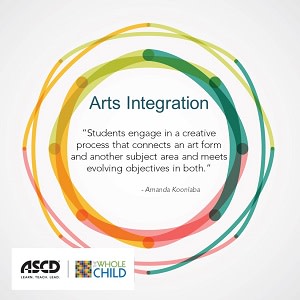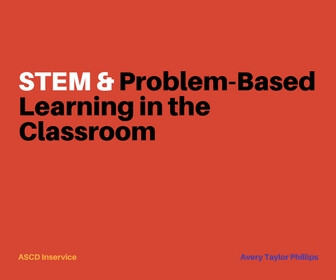Young students across the United States are struggling in math. The most recent round of NAEP results shows that just 35 percent of U.S. 4th graders scored proficient or better. That share is even smaller in New Mexico, where we work as district administrators focused on curriculum and instruction. Statewide, just 19 percent of 4th graders scored proficient or better in math in 2022.
Looking beyond these grim statistics, we both have found cause for optimism. In recent years, our districts implemented new high-quality math curricula in the elementary grades: Eureka Math and Zearn. Both are aligned to state standards, include professional learning for teachers, and grant every student access to grade-level content while they work to develop foundational skills.
We’ve found that using the same high-quality math curriculum across all schools in our districts establishes a common language and vision of grade-level instruction for all educators. It promotes collaboration and frees teachers from having to find or create supplementary materials. And because math homework uses consistent language, texts, and online tools throughout the elementary years, parents are better prepared to support students at home.
Using the same high-quality math curriculum across all schools in our districts establishes a common language and vision of grade-level instruction for all educators.
These are multiplier effects that have real power to improve teaching and learning. And we’ve seen these same impacts in both our districts, which have little else in common.
Karen’s district is suburban Rio Rancho Public Schools, which enrolls about 17,000 students on the outskirts of Albuquerque. Academic achievement is in the top tier in the state, even as enrollment has more than tripled over the past eight years. About one in four students is from a low-income family. Annual Map Growth data shows that math achievement has improved every year since Rio Rancho Public Schools adopted Eureka Math in 2015—a trend that held steady in 2020 and beyond, in contrast to the pandemic learning losses reported nationwide.
At rural Mesa Vista Consolidated Schools where Richard works, 250 students attend two elementary schools and a single middle and high school. Some 85 percent of students are economically disadvantaged, and in 2019, zero percent of students scored proficient in 8th grade math—the lowest scores in New Mexico. Since then, the district adopted a digital learning platform, distributed laptops, and implemented Zearn for math in grades K-5. In 2022, 14 percent of Mesa Vista 8th graders scored proficient, and another 36 percent were nearing proficiency.
Supporting Curriculum Implementation
In sharing our experiences, we’ve identified three major ways administers can support using a common high-quality math curriculum across schools in their districts.
1. Lead Alongside Teachers
In both our districts, teachers have decision-making power in curriculum adoption, and administrators are an active part of curriculum implementation. We also treat implementation as an ongoing process, with continual opportunities to refine and improve instruction. Because we all are working with a common curriculum, our efforts are focused on the same instructional tools and techniques, in service to a shared vision of excellence.
Teachers have decision-making power in curriculum adoption, and administrators are an active part of curriculum implementation.
At Rio Rancho, Eureka Math was initially adopted and then readopted this past year by teacher vote. Instructional coaches and building administrators have been trained to use a Eureka Math walkthrough tool to record and share feedback. This ensures that administrators understand and can recognize the shifts in instruction that high-quality math curriculum requires.
At Mesa Vista, teachers helped select Zearn after reviewing three different curricula. That established buy-in and was especially motivating as the district moved to 1:1 technology and implementation. Administrators also now visit classrooms regularly. Initially, these visits were brief, non-evaluative walkthroughs by a principal, assistant principal, or instructional coach, and administrators offered encouragement and non-critical feedback. Eventually, as trust grew, those observations also offered reflections on how teachers might improve math instruction and pointed to a particular practice or strategy.
2. Focus on Continual Curriculum-Based Professional Learning
As administrators, we have emphasized ongoing curriculum study and professional development for teachers, including through grade-level meetings and training to use online materials. This curriculum-based professional learning has helped our teachers build confidence, skillfulness, and conceptual mathematical knowledge.
At Mesa Vista, teachers praise Zearn’s video library of on-demand curriculum study. This just-in-time model of professional learning helps teachers maintain fidelity to the curriculum and keeps their focus on rigorous grade-level standards. It’s a far more effective model than standalone seminars, where teachers are expected to take notes and remember how to apply those insights weeks or months later.
Rio Rancho teachers work with school-based instructional coaches and use weekly grade-level Professional Learning Communities (PLCs) to dig into Eureka Math content, do the math, and determine how they are going to lead students with a range of background skills to master rigorous standards. This sort of collaboration and shared development is made possible by having unified our efforts under a single high-quality curriculum.
3. Accelerate, Don’t Remediate
With so many U.S. students performing below grade level in math, teachers across the country are facing a difficult challenge: how to reteach missing math knowledge while also giving students the grade-level instruction they need to catch up. As administrators, we’ve found that using a common high-quality math curriculum is a powerful source of support for our teachers, who can troubleshoot together rather than individually designing instructional scaffolds on the fly.
High-quality math curricula are designed to accelerate learning by starting with grade-level instruction and offering quick reteach activities to shore up students’ skills or conceptual knowledge as needed. They give teachers the confidence to challenge students and a ready set of tools to rebuild a shaky math foundation along the way.
High-quality math curricula are designed to accelerate learning by starting with grade-level instruction and offering quick reteach activities to shore up students’ skills or conceptual knowledge as needed.
When teachers use a common high-quality math curriculum, they can road-test and learn to trust these lessons during PLCs. At Rio Rancho, teachers backwards-plan instruction in Eureka Math during PLCs and anticipate where students are likely to need a reteach in context.
At Mesa Vista, teachers were understandably worried about focusing on grade-level instruction but have built confidence with Zearn, which includes “toolbox” components where students can learn unmastered content. This structure, and a districtwide commitment to math acceleration has pushed instruction toward appropriately rigorous study. Now during math class, we see teachers scaffold instruction while students also work in pairs and small groups, all working on grade-level content.
In both of our districts, teachers and administrators are working together, united by common cause and common, high-quality curricula. With a unified vision of student success and high-quality materials in hand, there’s no limit to what we and our students can do.
Note: Views expressed in this blog post are the authors' own and are not endorsements from ASCD.








